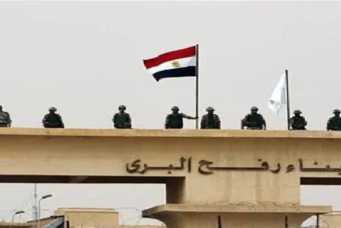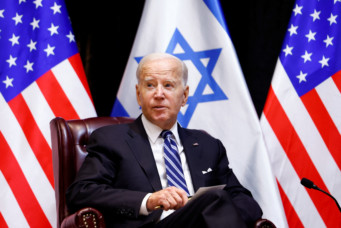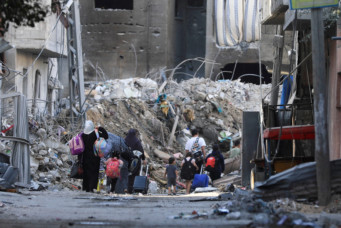Radicalization and Regional Instability: Effects of the Gaza War
As Israel attempts to reestablish its identity as a regional deterrent by destroying Gaza, the effects of its campaign cascade through the region, shifting political alignments, and generating new concerns over radicalization and conflict spillover

The world is watching Israel’s indiscriminate bombardment of Gaza and the mass killing of civilians. While the International Court of Justice debates the allegations of genocide, it is incumbent upon all of us to reflect on the impact of this war on the wider region, especially as we contemplate the images of Gaza in ruin, and the devastating photographs of maimed children; in light of these images, what are the prospects for peace between Arabs and Israelis? The ramifications of this war are bound to be far reaching for great powers’ interests in the region, especially those of the United States, Russia, and China. Whether these powers expand or shrink their presence in the Middle East, and the implications of these changes for regional stability, is a question of great importance today.
A proper point of departure, if peace and regional stability is our goal, is to start with this premise: Hamas did not create the Palestinian-Israeli conflict but is a product of the Palestinian-Israeli conflict. If we realize this simple fact, we begin to have a more nuanced understanding of current events in their broader historical context. To start with October 7, 2023 is to place Hamas and its actions in an ahistorical vacuum and thus obscure its implications for peace and regional stability.
I will frame my argument into three images: what the war means for the Arab world, the potential for radicalization, and finally the involvement of great powers in the Middle East. For the Arabs, as for the Israelis, the region post-October 7 is vastly different from the region it was before.
Regarding the first image, there is a clear difference in the way that the Arabs and Israel view October 7. While each party emphasizes only one side, the Hamas attack on Israel had two scenarios. In the first, Hamas managed to evade Israeli intelligence and missile defense systems to destroy communication command centers and capture Israeli soldiers as hostages. In the second, Hamas attacked Israeli civilians in the settlements and took civilian hostages.
The Israelis highlight the second scenario to make the case that Hamas is a terror organization that targets civilians, while emphasizing Israel’s victimhood. The Arab image, on the other hand and as depicted by the first scenario, highlights the military defeat of Israel at the hands of a non-state actor with few resources.
The image of the Israeli Army as an invincible force was shown to be a myth on October 7. Hamas’ attack, as well as its endurance for more than three months, undermined the mythology of the Israeli intelligence services and their technological wizardry. In reality, Israeli intelligence failed to predict or prevent the attack. It has also failed to locate hostages in Gaza, let alone free them.
The demystification of Israeli power has wider implications, particularly for small states in the region. Many of the Gulf States have opted to normalize relations with Israel in the last few years in return for its protection from potential enemies like Iran. These recent failures of Israeli security indicate that this trade-off may not be lucrative.
The war in Gaza has exposed Israel’s inability to deter Iran, both in the failures of its intelligence gathering and its military operations. Israel’s capacity is limited, it attacks Iranian-backed militias either in Syria or Lebanon or engages through small espionage operations with very little strategic value. These attacks have not prevented Iranian-backed militias from launching attacks on Israel’s northern border. October 7 has led to a reassessment of whether Israel’s military is as effective of a deterrent as it claims.
In terms of deterring Iran from going nuclear, Israel has proven incapable of achieving this goal either, as Iran became a nuclear threshold state in 2023. If Iran were to develop a nuclear weapon, Israel would be hard-pressed to maintain its military engagements on three fronts: Gaza, its borders, and Iran itself.
As Arab states watch Israel’s failure to predict attacks or protect against them, they may begin to have second thoughts about their investments in Israeli security. One can argue that the disproportionate display of firepower over Gaza is only an attempt to repair the badly damaged image of the Israeli army as an effective regional deterrent.
Furthermore, Israel’s insistence on releasing the hostages by force is yet another attempt to repair the image of its intelligence services. After three months, the Israelis have failed on both fronts—there is no victory in sight and no hostages were released outside of negotiations. Thus, Israel is still a damaged regional power. This is problematic, not only for the neighboring Arab states who began normalization to have access to this power, but also for Western countries who have promoted Israel as a regional balancer and security asset.
Arab media outlets and audiences suspect that Prime Minister Benjamin Netanyhu is aiming to pull the United States into a wider regional war as a cover for his failure in Gaza. If this strategy succeeds and the United States is dragged into a confrontation with Iran, the risk for neighboring Arab states will be high, especially for those that have already normalized with Israel.
The Gulf States, given their geographic proximity to Iran, could find themselves as the tip of the spear of a U.S-Israeli assault on Iran. In preparation for this scenario, countries like the United Arab Emirates and Bahrain have emphasized that their normalization processes with Israel are primarily economic and diplomatic, rather than military alliances. Saudi Arabia, meanwhile, has pumped the brakes on the normalization process and has told the United States that there will be no peace process with Israel until the recognition of an independent Palestinian state. This requirement was absent before October 7, indicating that the crisis in Gaza is hampering normalization processes across the region.
The intelligence failure and lack of army readiness were not Israel’s only vulnerabilities. Cracks were already beginning to show in Israel’s dysfunctional society during the judicial reform protests of 2023. Netanyhu’s ploy to weaken the Israeli Supreme Court prompted many Israelis to take to the streets in protest, especially in light of the corruption allegations he faces. The composition of Netanyhu’s government has shifted to the extreme right, highlighting significant divisions along ideological and ethnic lines. These deepening fissures, and the weakness they reveal, has emboldened Hamas and other regional players to act.
These fissures bring forth the second image: the potential for radicalization. From a Palestinian perspective, Hamas’ attacks made the Palestinian cause the most important foreign policy agenda item worldwide. In the meantime, the mass killing of Palestinians in Gaza by Israeli dumb bombs is creating more radicals in the region than it is taking out. Violence begetting radicalization should not be a surprise; most Hamas and Islamic Jihad fighters today lost their parents and families during the 2014 war on Gaza—a conflict which created an army of orphans who lost their families to Israeli airstrikes.
This radicalization is not limited to Gaza or Palestine in general, it spans the entire Arab and Muslim world. Extremism on one side breeds extremism on the other, as witnessed during the Sunni revival and radicalism of the 1980s, which grew as a response to the 1979 Shia revolution in Iran. Current Israeli extremism will produce a mirror image in the Arab and Muslim worlds to the extent that it might radicalize both the Sunnis and the Shiites, simultaneously.
This has implications for the United States and for the region alike. Many consider America to be complicit in this war, especially through damaging statements such as those made by President Biden and the Secretary of State, Antony Blinken. Biden declared his support for Zionism while Blinken declared his Jewishness in an attempt to show solidarity with Israel.
These statements translate well amongst Israelis and much of the Jewish population in the United States. However, they translate very badly in the Muslim and Arab world and represent the conflation of the United States and Israel. As a result, the fury over Israel’s mass killings in Gaza is being translated into hating America and Americans. The United States might need another twenty years to recover from this.
Saudi Arabia has also been caught in the crossfire. Many analysts in the Western world have focused on how the Hamas attacks torpedoed the Saudi-Israeli negotiations over normalization. However, what is most important today is how Israeli violence in Gaza, and the radical response it has generated, will undermine Saudi’s reform project.
For the last seven years, Saudi Arabia has held Islamist currents at bay, but the recent violence may revive radical voices that had, until recently, been dormant. The appeal of this resistance discourse is gaining more ground and the lines between moderates and radicals are blurring in Arabic social media today. It seems the Islamists are back and nothing can stop them.
As regional radicalization begins to grow, the image for great powers’ interests in the Middle East also becomes more complex. For the United States, the war in Gaza and the engagement of U.S. battleships in the Red Sea and Yemen distracts from the greater strategic issue: the competition for global primacy with Russia and China.
This overstretching from Ukraine to Gaza to the Red Sea, all while thinking about the Indo-Pacific and potential war with China, is likely to make the United States lose focus; it cannot fight on three fronts at the same time. The implication of this loss of focus for regional and global strategy is certainly alarming for all concerned. With no clear international leader in the region, Arab countries will hedge their bets amongst the United States, China, and even Russia, indicated by Putin’s recent visit to the United Arab Emirates and Saudi Arabia in December 2023.
With regional conflict looming, rising risk of radicalization, fluctuating political alignments, and a deep uncertainty about what the future holds, the effects of Gaza must not be underestimated. The status of the Middle East today can be reflected in the words of the Irish poet William Butler Yeats: “Things (are falling) apart; the center cannot hold; mere anarchy is loosed upon the world; the blood-dimmed tide is loosed, and everywhere the ceremony of innocence is drowned; the best lack all conviction, while the worst are full of passionate intensity.”
Fandy recently joined the International Institute for Strategic Studies (IISS) in London as Director of Middle East Program and Gulf Security. He regularly contributes to articles in the pan-Arab daily Asharq Al-Awsat. He has also written for many outlets and his books include Saudi Arabia and the Politics of Dissent and (Un)civil War of Words: Media and Politics in the Arab World.
Read More



